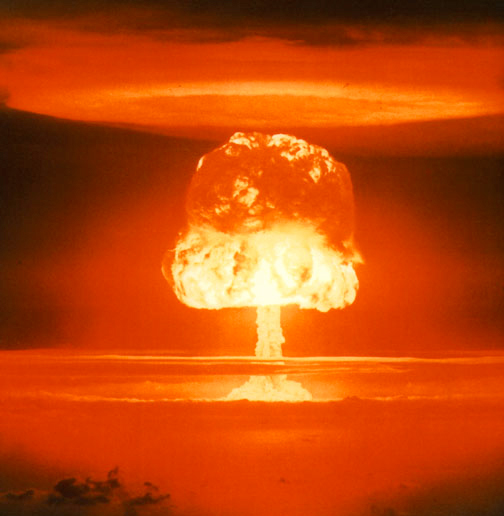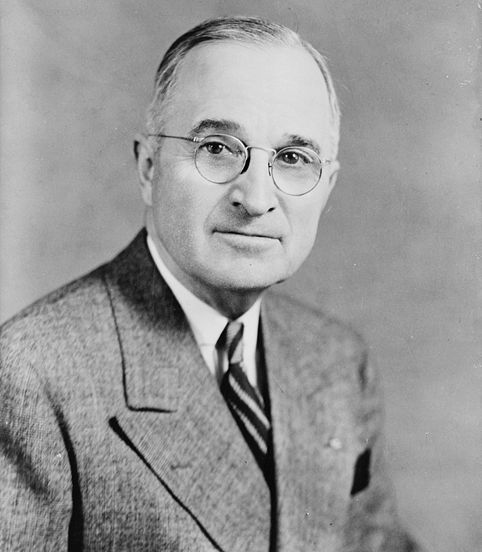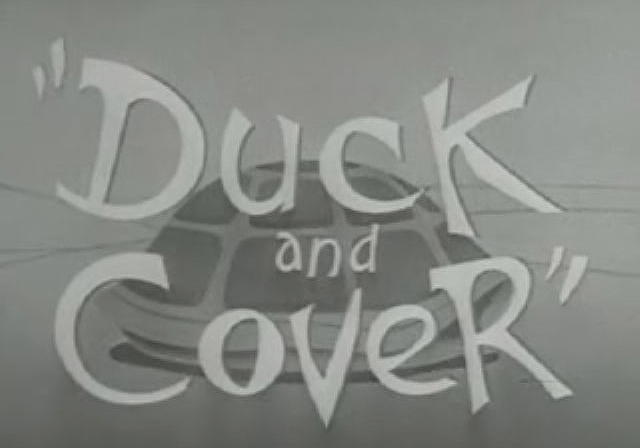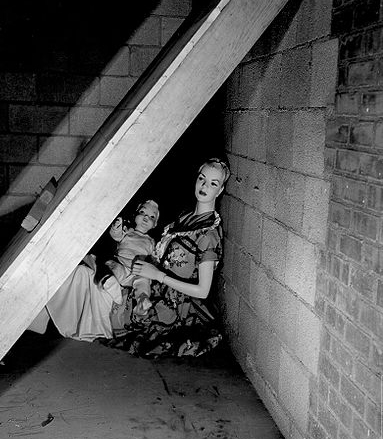Even during the tensest moments between the United States and the Soviet Union, like the Berlin Blockade, the Americans always had a clear advantage in negotiations: The United States was the only country with atomic weapons.
 |
| Atomic bomb tests were common during the Cold War: this bomb was detonated in 1954. |
That advantage disappeared on August 29, 1949, when the Soviet Union successfully detonated its first atomic bomb.
Western leaders were shocked that the Soviets had developed atomic weapons so quickly. (It turned out that Soviet spies had stolen important blueprints from the American Manhattan Project, which designed the world's first atomic bombs. These reduced the amount of testing needed to build a bomb.) Soviet leaders, on the other hand, were shocked that the Americans had detected their test and announced it to the international community.
The rest of the world was afraid: Two superpowers were coming closer to war, and now they both had the most powerful weapons in existence.
The development of the Soviet Union into an atomic superpower dramatically changed the nature of the Cold War. Truman and Stalin were still aggressive in their policies, but the consequences of all-out war became even more serious.
The Soviet Union's first atomic test signaled the beginning of the Soviet-American "arms race." An arms race is a race to attain a bigger and more powerful arsenal than your opponent. Over the coming decades of the Cold War, the Soviet Union and the United States would spend trillions of dollars building stockpiles of atomic weapons.
Click through the following slideshow to see how atomic bombs affected politics and culture in the United States.
Tough Decisions
After ordering two atomic bombs to be dropped on Japan during World War II, President Truman refused to use them again in his conflicts with the Soviet Union and other communist states. Some generals and politicians wanted to use small atomic weapons on the battlefield, but Truman wanted them to remain a threat, not a reality. Duck and Cover
The threat of atomic warfare was a reality for American children in the 1950s. This picture is from "Duck and Cover," an educational film shown to children in the 1950s. It taught them that an atomic attack could happen at any time and that they should "duck and cover" whenever they saw the flash of an atomic explosion. Gimme Shelter
Safety wasn't just for children. Atomic explosions release dangerous radioactive material called "fallout," and towns throughout the United States built underground fallout shelters for their residents. People were expected to keep the location of fallout shelters in mind. This picture shows an improvised fallout shelter in a basement. |
